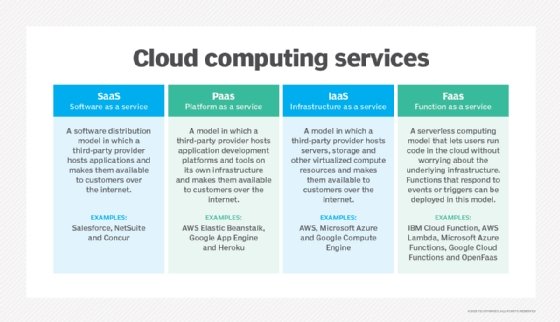Simplify Your Infrastructure With Cloud Solutions
As businesses browse the ever-evolving landscape of innovation and information management, the function of cloud solutions in streamlining facilities has actually become significantly famous. Just how can companies successfully browse this transition and really unlock the possibility of cloud solutions for simplifying their infrastructure?
Benefits of Cloud Services
Cloud solutions supply a structured approach to managing IT framework, giving companies with scalability, adaptability, and cost-efficiency. Among the key advantages of cloud solutions is the scalability they offer. Businesses can quickly scale their sources up or down based upon demand, ensuring they just pay for what they utilize. This adaptability is specifically advantageous for companies with varying requirements or those experiencing development.
In addition, cloud solutions get rid of the demand for businesses to spend in expensive software and hardware. This cost-efficiency is a significant advantage, specifically for small to medium-sized enterprises wanting to minimize ahead of time costs. By using cloud solutions, businesses can access top quality IT resources without the hefty cost connected with typical infrastructure arrangements.
Furthermore, cloud services offer companies with the flexibility to access their data and applications from anywhere with an internet connection. This degree of ease of access improves cooperation amongst groups, enables remote job, and increases total efficiency. The flexibility offered by cloud solutions empowers companies to adjust swiftly to changing market problems and consumer demands.
Cost Savings and Scalability
Along with the operational benefits highlighted previously, the integration of cloud services right into a business's facilities yields considerable expense financial savings and boosted scalability. Cloud services offer a pay-as-you-go design, enabling businesses to range sources up or down based on existing needs, thus staying clear of the prices related to maintaining excess ability. This flexibility enables business to adapt rapidly to varying demands without sustaining unneeded expenses.
Additionally, cloud solutions remove the need for in advance investments in software and hardware, decreasing resources expenditures. Overhead are also minimized as firms no more require to handle and preserve physical web servers, causing reduced power intake and IT staffing expenses. In addition, cloud solutions provide automated updates and upkeep, making certain that the facilities continues to be up-to-date and safe without requiring hands-on treatments.
Boosted Safety Steps
Carrying out stringent protection steps is critical when integrating cloud solutions right into a firm's facilities to guard delicate information and guarantee compliance with sector guidelines. Cloud service carriers use improved safety features such as data encryption, firewall program defense, and multi-factor verification to mitigate cybersecurity threats.
Additionally, routine safety audits and compliance evaluations aid identify susceptabilities and make sure adherence to sector standards. Firms can likewise benefit from functions like automatic safety and security updates and real-time threat surveillance given by cloud company. By focusing on protection measures and remaining positive in addressing possible dangers, businesses can with confidence leverage cloud solutions while shielding their useful information from unauthorized accessibility or violations.
Transitioning to Cloud Infrastructure
To efficiently integrate cloud services into a firm's infrastructure, a structured approach that attends to the change in the direction of cloud-based web remedies is crucial. Transitioning to shadow infrastructure involves mindful planning and implementation to guarantee a smooth migration process - linkdaddy cloud services press release.
When the analysis is complete, a migration approach ought to be established. This technique should describe the timeline, resources, and obligations for relocating each component to the cloud. It is necessary to interact this plan clearly to all stakeholders to make sure placement and reduce interruptions throughout the transition.
Throughout the migration process, monitoring and screening are critical to determine and resolve any issues quickly. Regular checkpoints should be developed to track progression and make essential modifications. Additionally, training for employees on utilizing cloud services need to be provided to make sure an effective shift and make best use of the advantages of the new facilities.
Finest Practices for Cloud Adoption
Successful adoption of cloud solutions rests on the strategic placement of company goals with technological capabilities and business readiness. To make certain a smooth change to the cloud, companies ought to begin by conducting a comprehensive evaluation of their current infrastructure and identifying Read Full Article which workloads are best fit for cloud movement. It is essential to involve key stakeholders from various departments in the decision-making process to get buy-in and attend to any kind of problems early on.
An additional finest practice for cloud adoption is to prioritize safety and conformity. Organizations must meticulously assess the safety measures used by cloud solution providers and make sure that their information is shielded according to industry criteria and regulative demands. Executing robust data security, accessibility controls, and regular safety and security audits can assist mitigate dangers related to cloud adoption.

Verdict

As businesses browse the ever-evolving landscape of technology and data monitoring, the duty of cloud services in streamlining facilities has come to be progressively famous - universal cloud Service. How can organizations effectively navigate this shift and absolutely open the possibility of cloud solutions for streamlining their framework?
Cloud services use a streamlined strategy to handling IT facilities, offering organizations with cost-efficiency, scalability, and versatility. By making use of cloud services, companies can access top notch IT sources without the substantial cost tag associated with conventional infrastructure arrangements.
To make sure a smooth shift to the cloud, organizations need to start by carrying out a thorough evaluation of their present facilities and determining which workloads are best suited for cloud migration.